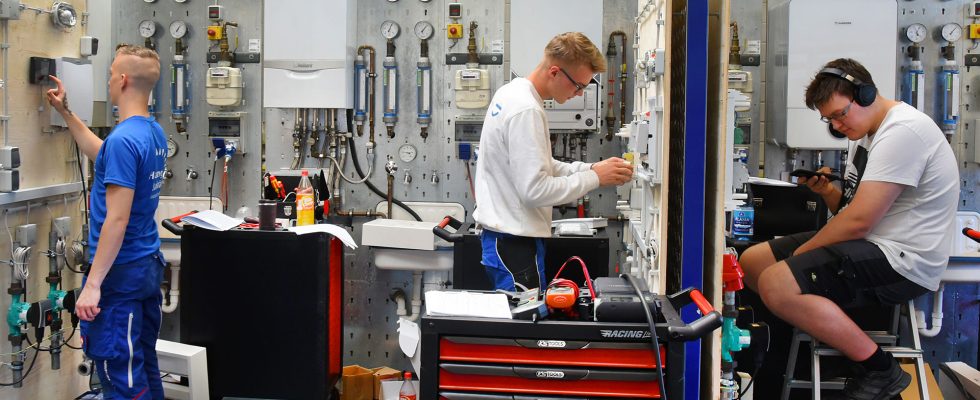Status: 04/12/2023 11:11 a.m
The number of new trainees is only growing very slowly after the Corona slump. Fewer young people started training in crafts in 2022. The shortage of skilled workers threatens to worsen.
More new trainees in industry, but fewer in the trades – this is the balance of the training year 2022. Overall, slightly more young people started training last year than in 2021, as the Federal Statistical Office announced today.
However, this is far from offsetting the sharp slump caused by the Corona crisis. According to the statistics office, the number of new training contracts rose very slowly by 2,700 to 468,900 – an increase of 0.6 percent.
Fewer people in training
In 2019, 510,900 young people had started an apprenticeship. At the end of 2022, 1.22 million people were in multi-year vocational training, three percent fewer than in 2021.
A look at the various sectors shows that almost three percent more training contracts (a total of 269,800) were concluded in industry and trade in particular. On the other hand, the number of new contracts in skilled trades fell by 2.3 percent to 127,400 new apprenticeships. Fewer training courses were also started in agriculture (down five percent to 13,000 contracts).
The Central Association of German Crafts (ZDH) expects a shortage of skilled workers that threaten the future viability of society. “Only with sufficiently qualified craftsmen and women can climate protection, the energy and mobility transition, infrastructure expansion succeed and be implemented and daily supply ensured,” the association said recently.
Male trainees remain in the majority
Furthermore, it is mainly young men who start an apprenticeship in a trade. In 2022, the share was 81 percent. However, the distribution is slowly shifting, because while a total of three percent fewer men have started vocational training, two percent more women have signed an apprenticeship contract in a craft business.
The proportion of women in dual training is also increasing slightly across all sectors: the increase in new training contracts was higher for women at 1.1 percent than for men at plus 0.3 percent.
Demographic consequences for dual training
The dual training in company and vocational school has tended to struggle with young talent for years. On the one hand, this is due to the demographic development, which is causing the number of applicants for training positions to decrease steadily.
However, many young people also find the academic educational opportunities such as dual studies or training at technical colleges and universities more attractive. According to surveys by the Institute for Labor Market and Vocational Research (IAB), the proportion of companies in Germany that provide training is also declining.

